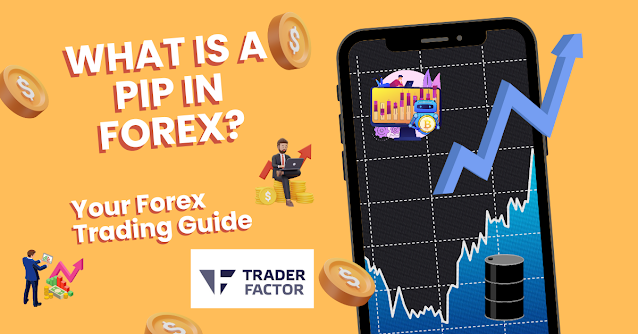One key element to success as a forex trader is having a well-defined trading plan. In this discussion, we will explore the importance of a forex trading plan, its components, risk management strategies, setting realistic trading goals, and the role of technical analysis in forex trading.
Importance of a Forex Trading Plan
A forex trading plan is essential for traders to effectively navigate the dynamic and unpredictable forex market. Let’s delve into the various aspects that highlight the importance of having a well-crafted trading plan:

Consistency and Discipline
Consistency and discipline are vital traits for successful trading. A trading plan helps traders establish predefined rules and guidelines, ensuring they consistently follow their strategy without succumbing to impulsive decisions. By adhering to a plan, traders can avoid emotional biases and maintain a disciplined approach to their trading activities.
Risk Management
Risk management is a critical component of trading. A trading plan allows traders to define their risk tolerance levels, position sizing strategies, and stop-loss orders. By implementing these risk management techniques, traders can effectively control and mitigate potential losses, safeguarding their trading capital in the face of market volatility.

Objective Decision-Making
Emotions can significantly impact trading decisions, often leading to poor outcomes. A trading plan provides traders with a logical framework for decision-making based on objective analysis rather than emotions. It ensures that traders make informed choices by considering market conditions, technical indicators, and trade setups outlined in their plans.
Long-Term Profitability
The ultimate goal of forex trading is to achieve long-term profitability. A trading plan helps traders monitor and evaluate their performance over time. By keeping a record of trades and analyzing past results, traders can identify strengths and weaknesses in their strategies. This allows them to make necessary adjustments, refine their approach, and enhance their overall profitability in the long run.
Adaptability to Market Conditions
Market conditions can change rapidly, requiring traders to adapt their strategies accordingly. A trading plan enables traders to outline specific criteria for different market scenarios. This flexibility ensures that traders can adjust their approach based on evolving market conditions while maintaining consistency and discipline.
Psychological Stability
The forex market is known for its inherent volatility and uncertainty, often leading to emotional stress. A trading plan helps traders manage their psychological state by providing a structured and systematic approach. With predefined rules and guidelines, traders can reduce emotional decision-making and maintain a stable mindset during favorable and challenging market conditions.

Learning and Improvement
Continuous learning and improvement are crucial for success in forex trading. A trading plan encourages traders to keep a detailed trade journal, recording their trades, entry and exit points, and rationales. By regularly reviewing and analyzing their trading activities, traders can identify patterns, learn from their mistakes, and fine-tune their strategies for better future performance.
Time Efficiency
Efficient time management is essential for traders who want to maximize their trading hours. A trading plan helps traders establish a routine by outlining specific times for market analysis, trade execution, and performance review. This organized approach ensures that traders allocate their time effectively, avoid distractions, and maximize productivity.
Components of a Forex Trading Plan
A well-rounded forex trading plan comprises several key components that help traders define their goals, manage risks, establish strategies, and track their progress.

Trading Goals
Setting clear and specific trading goals is fundamental to a successful trading plan. Traders should identify their objectives, whether achieving a certain level of profitability, growing their trading account, or developing specific trading skills. By defining goals, traders can stay focused and motivated on their journey as they work towards achieving their desired outcomes.
Risk Management Strategy
An effective risk management strategy is crucial to protect capital and manage potential losses. Traders should outline their risk tolerance and position sizing rules and determine appropriate stop-loss levels for each trade. Additionally, they should establish risk-to-reward ratios to ensure that potential profits outweigh potential losses. By implementing a sound risk management strategy, traders can safeguard their trading capital and maintain longevity in the market.

Trading Strategy
A trading strategy outlines traders' approaches and methodologies for identifying trading opportunities and making informed decisions. This includes using technical analysis indicators, chart patterns, or other tools. Traders should define their entry and exit criteria for various trade setups, specifying when to enter and exit based on predefined conditions. A well-defined trading strategy helps traders maintain consistency and objectivity in their decision-making process.
Trade Execution Rules
Trade execution rules establish guidelines for entering and exiting trades. Traders should specify the maximum number of trades per day or week, the maximum exposure per trade, and any specific rules for entering or exiting positions. By setting clear trade execution rules, traders can avoid impulsive and emotional trading decisions and ensure that each trade aligns with their overall strategy.
Trading Time Frames
Traders should determine the time frames they will focus on based on their trading style and available time commitment. Whether it’s day trading, swing trading, or position trading, selecting appropriate time frames allows traders to align their trading strategy with their preferred approach. Different time frames provide different levels of detail and insights into price action, helping traders make informed decisions based on their trading goals.

Trading Tools and Resources
Identifying the necessary trading tools and resources is essential for effective execution. Traders should determine the specific trading platform, charting software, economic calendars, news sources, or other resources they will utilize. With access to reliable and up-to-date information, traders can analyze the market accurately and make well-informed trading decisions.
Trade Journal
Keeping a trade journal is a valuable component of a trading plan. Traders should maintain a detailed record of their trades, including entry and exit points, trade rationale, risk-to-reward ratios, and performance metrics. The trade journal is a valuable tool for analyzing past trades, identifying patterns, and learning from mistakes. Reviewing the trade journal helps traders improve their decision-making and strategies over time.
Market Analysis Routine
A well-defined market analysis routine outlines the process and frequency of analyzing the market. Traders should specify the timeframes they will use for technical analysis, indicators they rely on, and any other factors they consider while assessing market conditions. Additionally, they should determine how they will stay updated on market news and events that may impact their trades. A structured routine ensures consistent analysis and keeps traders informed about the latest developments in the market.

Review and Evaluation
Regularly reviewing and evaluating trading performance is crucial for continuous improvement. Traders should establish a schedule for reviewing their trading plan, analyzing performance metrics, and evaluating the effectiveness of their strategies. This allows them to identify areas where they can make adjustments or improvements based on real-time data. Regular review and evaluation help traders adapt to changing market conditions and optimize their approach.
Risk Management Strategies

Implementing effective risk management strategies is crucial in forex trading to protect capital and minimize potential losses. Let’s explore some key strategies that traders can employ:
Position Sizing
Position sizing refers to determining the appropriate amount of capital for each trade based on risk tolerance and account size.
For example, if a trader has a $10,000 trading account and decides to risk 2% of their capital per trade, they would allocate $200 for each trade.
Stop-Loss Orders
Stop-loss orders are essential risk management tools that help limit potential trade losses. For instance, if a trader enters a long position on the EUR/USD currency pair at 1.1500 and sets a stop-loss order at 1.1450, the position will be automatically closed if the market moves 50 pips against the trader.
Risk-to-Reward Ratio
The risk-to-reward ratio compares the potential profit and potential loss of a trade. Let’s say a trader identifies a trade on the GBP/JPY currency pair with a potential profit target of 100 pips and sets a stop-loss order at 50 pips. In this case, the risk-to-reward ratio would be 1:2, as the potential reward is twice the potential risk.

Trailing Stops
Trailing stops are dynamic stop-loss orders that adjust as the market moves in favour of the trade. For example, if a trader enters a short position on the AUD/USD currency pair at 0.7500 and sets a trailing stop of 50 pips, the stop-loss order will move downward by 50 pips for every 50-pip increase in the market price, helping to protect gains.
Diversification
Diversifying a trading portfolio involves spreading investments across multiple currency pairs. For instance, a trader may decide to trade the EUR/USD currency pair and the USD/JPY and GBP/USD pairs. By diversifying, traders reduce their exposure to the risk associated with a single trade or currency pair.
Risk Assessment and Analysis
Thorough risk assessment and analysis are crucial before entering a trade. For example, a trader may analyze the economic fundamentals and technical indicators for the USD/CAD currency pair to assess potential risks and make informed decisions about their trading strategy.
Use of Risk Management Tools
Traders can utilize various risk management tools on trading platforms or external software. These tools may include position size calculators, risk-reward calculators, and volatility indicators. For instance, a trader may use a position size calculator to determine the appropriate position size based on risk tolerance and account size.

Regular Evaluation and Review
Regularly evaluating and reviewing risk management strategies is important for continuous improvement. Traders should assess the effectiveness of their risk management techniques based on historical performance and make necessary adjustments if needed. For example, a trader may review their trade journal and performance metrics to identify areas for improvement in their risk management practices.
Storage
While not directly related to risk management strategies, storage refers to how traders securely store their digital assets, including cryptocurrencies. Traders should employ secure storage solutions such as hardware wallets or offline cold storage to protect their digital currencies from hacking or theft.
Setting Realistic Trading Goals
Setting realistic trading goals is essential for traders in various financial markets, including currencies, commodities, indices, and forex.

Define Clear Objectives
Traders should start by defining clear objectives for their trading activities. For example, a trader may aim to achieve consistent profitability, build a specific percentage of capital growth within a certain timeframe, or generate a steady income from trading.
Consider Timeframes
It’s important to consider the desired timeframe for achieving trading goals when setting them. Traders can have short-term goals, such as making a certain number of successful trades in a week and long-term goals, such as achieving an annual return on investment.
Be Realistic
It’s crucial to set realistic, achievable goals based on one’s trading skills, experience, and available resources. For instance, a beginner trader may set a goal of gradually increasing their profits over time, while an experienced trader may aim for higher returns based on their track record.

Quantify Your Goals
To make goals more tangible, it helps to quantify them. For example, instead of setting a vague goal of “making more money,” a trader could set a specific target, such as aiming for a 10% return on investment per month or increasing the account balance by a certain dollar amount.
Account for Risk
Traders must consider the risk involved in their trading activities when setting goals. It’s important to balance ambitious goals with effective risk management. For example, a trader may prioritize preserving capital and minimizing losses while striving for consistent profitability.
Flexibility and Adaptability
Market conditions can change, and traders need to be flexible and adaptable in their goal-setting process. Goals may need to be adjusted based on market volatility, economic events, or shifts in personal circumstances. Adjusting goals allows traders to stay realistic and responsive to changing conditions.
Break Down Goals
Breaking down larger goals into smaller, manageable steps can make them more attainable and less overwhelming. For example, a trader aiming to achieve a certain annual return on investment can set monthly or quarterly targets contributing to the overall goal.

Regularly Monitor and Evaluate
Traders should regularly monitor and evaluate their progress towards their goals. This involves reviewing performance metrics, analyzing trades, and making necessary adjustments. By regularly evaluating progress, traders can identify strengths, weaknesses, and areas for improvement, ensuring that their goals remain relevant and achievable.
Technical Analysis in Forex Trading
Technical analysis plays a crucial role in forex trading. It provides traders with insights into price movements and helps them make informed trading decisions.

Price Patterns
Price patterns are formations on forex charts that can provide signals about future price movements. Examples of price patterns include head and shoulders, double tops, triangles, and flags. By identifying these patterns, traders can anticipate potential breakouts or reversals and adjust their trading strategies accordingly.
Indicators
Indicators are mathematical calculations applied to price data on forex charts. They help traders identify trends, momentum, overbought or oversold conditions, and other market dynamics. Popular indicators include moving averages, relative strength index (RSI), stochastic oscillator, and MACD. Traders use indicators to generate trading signals and confirm their analysis.
Support and Resistance Levels
Support and resistance levels are areas on a chart where the price tends to stall or reverse. Support is a price level where buying pressure is strong enough to prevent further price declines, while resistance is a level where selling pressure is strong enough to prevent further price increases. Traders often use support and resistance levels to determine entry and exit points and set stop-loss orders.

Trend Analysis
Trend analysis involves identifying the direction of price movement in the market. Traders can identify uptrends, downtrends, or sideways trends by analyzing price action and using trend lines. By following the overall trend, traders can align their trades with the predominant market direction, increasing the probability of successful trades.
Chart Timeframes
When trading, you must analyze price data on various timeframes, ranging from minutes to monthly charts. Shorter timeframes, such as 5-minute or 15-minute charts, provide more detailed information about intraday price movements, while longer timeframes, such as daily or weekly charts, give a broader market perspective. Traders often use multiple timeframes to comprehensively view price action and confirm their analysis.
Entry and Exit Points
Technical analysis helps traders determine optimal entry and exit points for their trades. By combining various technical tools, such as support and resistance levels, trend lines, and indicators, traders can identify potential trade setups and define precise entry and exit points. This allows them to manage risk and maximize profit potential.
Multiple Timeframe Analysis
In day trades, multiple timeframe analysis involves simultaneously examining price action and technical indicators across different timeframes. By comparing signals and trends on multiple timeframes, traders can gain a more comprehensive understanding of the market and make more informed trading decisions. For example, a trader may analyze the trend on a daily chart and use a shorter timeframe, like a 1-hour chart, to identify entry and exit points.

Backtesting and Historical Data
Backtesting involves analyzing historical price data to assess the effectiveness of a trading strategy. Many traders simulate trades on past data using their chosen technical indicators and rules, evaluating how well the strategy would have performed in different market conditions. Backtesting helps traders refine their strategies, identify weaknesses, and improve their overall trading performance.
What is a trading plan?
A same-day trading plan is a well-thought-out strategy that guides traders' day trading activities. It outlines the trader’s goals, trading strategies, risk management techniques, and guidelines for buying and selling securities.
Why is having a trading plan important for day traders?
Having a trading plan is essential for day traders. It provides structure and helps them take advantage of trading opportunities while managing risk effectively. It also ensures that traders have a clear action plan and can make informed decisions in the fast-paced world of day trading.
What should be included in a trading plan?
In securities markets, a trading plan should include details about trading strategies, risk tolerance, specific markets to focus on, entry and exit strategies, risk management techniques, and guidelines for maintaining minimum equity in a margin account.

Can day trading strategies guarantee profits?
Day trading involves financial risk, and while effective trading strategies can increase the likelihood of success, they do not guarantee profits. Pattern day traders must know that losing trades is part of the trading process and should manage risk accordingly.
How can technical analysis and technical indicators help in day trading?
Technical analysis in a day trade involves analyzing stock price patterns and using technical indicators to make trading decisions. Day traders can identify potential trading opportunities and make more informed decisions by studying market trends and using indicators such as moving averages or relative strength index (RSI).
What is an exit strategy, and why is it important for a day trader?
An exit strategy is a predetermined plan for closing a trade during a day trade. It is crucial for day traders to have an exit strategy in place to protect against losses and lock in profits. Without an exit strategy, day traders may be vulnerable to sudden market reversals and the risk of margin calls.
Why is staying informed with financial news important for a day trader?
A day trader must stay informed about market-moving news events, such as earnings reports or breaking news, as these can significantly impact stock prices. Awareness of such events helps day traders make more informed decisions and adjust their strategies accordingly.

What is risk management, and why is it crucial for a day trader?
Risk management involves implementing strategies to protect against potential losses. Day traders must manage risk effectively by setting stop-loss orders, maintaining minimum equity requirements, and using proper position sizing techniques. This helps day traders control the amount of risk they expose themselves to while maximizing their potential for profitability.
How can day traders manage risk in their trading activities in the stock market?
Day traders in the stock market can manage risk by implementing proper risk management techniques, such as setting stop-loss orders, diversifying their trading positions, maintaining the required minimum equity in their margin accounts, and continuously monitoring their trades.
What are swing trading and momentum trading techniques?
Swing traders employ a trading technique that aims to capture short- to medium-term trends within a prevailing trend. On the other hand, momentum trading focuses on buying securities that show strong upward momentum and selling securities that show weakness. Both techniques require careful analysis of market trends and technical indicators.
Can traders lose money, and what sets successful traders apart from others?
In the trading world, successful traders trading day often have a combination of effective trading strategies, disciplined risk management, and the ability to adapt to changing market conditions. To avoid losing trade, most traders prioritize continuous learning and improvement, evaluate their trades, and refine their strategies based on their experiences.

what is an option in trading?
Options are crucial in forex trading as they provide traders with flexibility and risk management strategies. Forex options are contracts that give traders the right, but not the obligation, to buy or sell currency pairs at a predetermined price within a specified timeframe. These options can be traded through specialized brokers and platforms dedicated to forex options trading.
Forex options allow traders to speculate on the future movement of currency pairs, offering an additional layer of opportunity in the forex market. By utilizing forex options, traders can profit from rising and falling exchange rates.
With forex options, also known as currency options trading or FX options trading, traders can hedge their positions, manage risk, and take advantage of market volatility. This added flexibility allows traders to customize their trading strategies based on their outlook and market conditions.
To trade forex options, one must choose a reputable broker offering a platform. These platforms provide access to various currency pairs and option types, such as call and put options. Traders can analyze market trends, utilize technical indicators, and employ various trading strategies to make informed decisions.
Forex options are an integral part of the forex trading landscape, allowing traders to diversify their portfolios and capitalize on market movements.

Remember that day trade involves financial risks, and it’s important to carefully consider your risk tolerance before engaging in day trading activities. It is advisable to consult with a qualified financial advisor or brokerage firm to understand the specific risks involved and make well-informed decisions. The best trading strategy in the financial market to avoid losing money involves incorporating various risk management techniques.
Disclaimer:
All information has been prepared by TraderFactor or partners. The information does not contain a record of TraderFactor or partner’s prices or an offer of or solicitation for a transaction in any financial instrument. No representation or warranty is given as to the accuracy or completeness of this information. Any material provided does not have regard to the specific investment objective and financial situation of any person who may read it. Past performance is not a reliable indicator of future performance.
FOLLOW US









